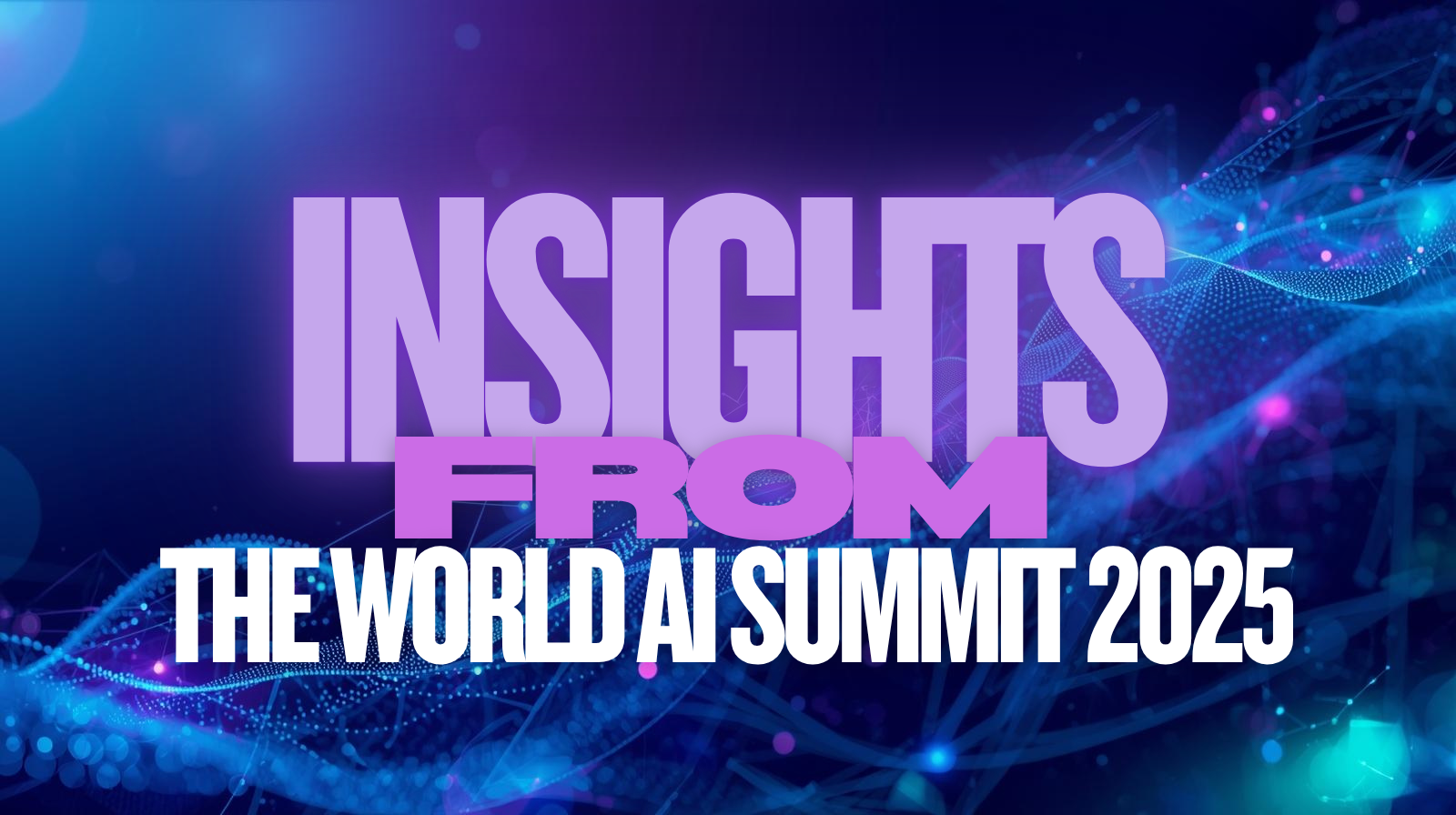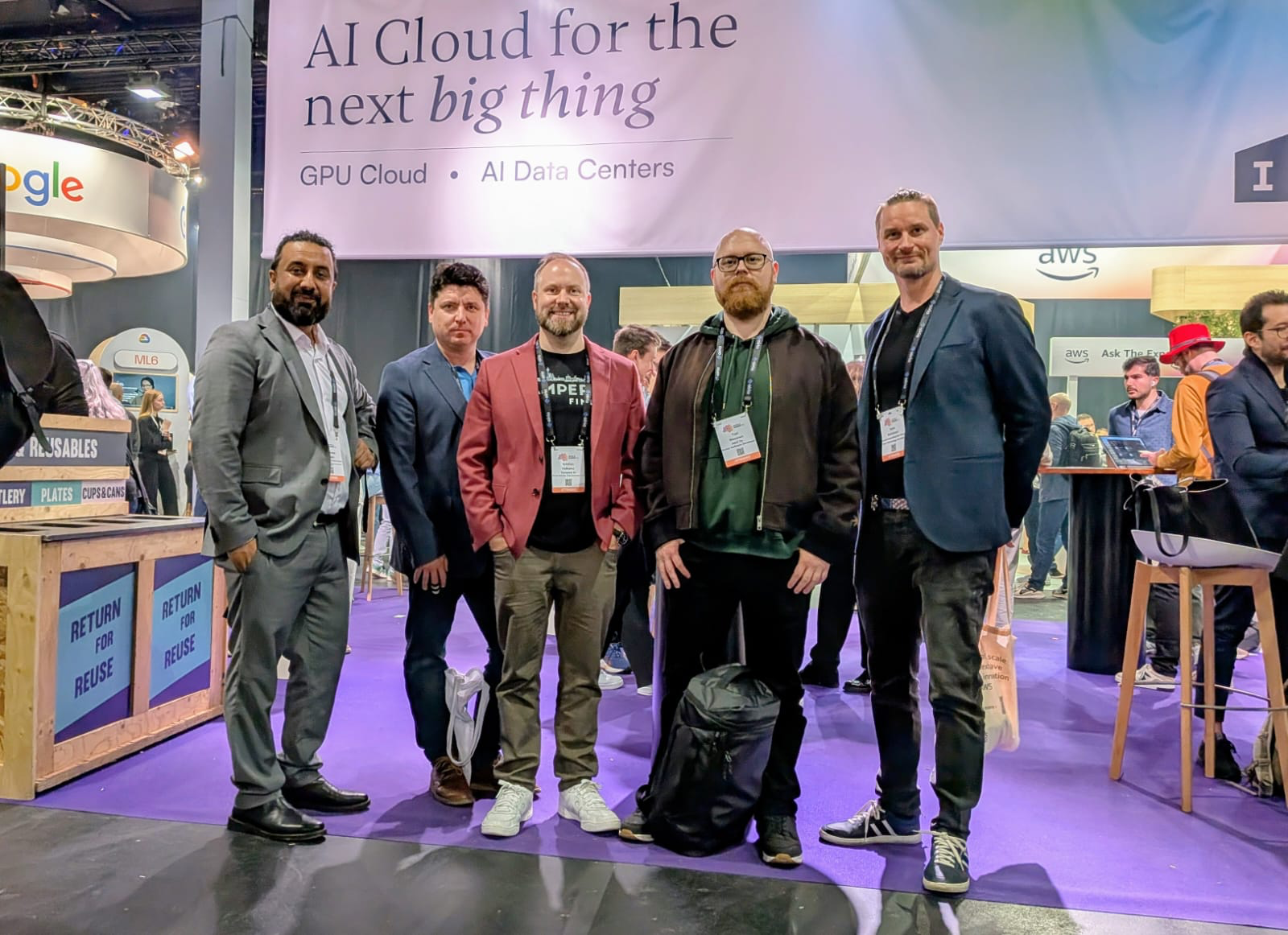
Highlights:
AI turns agentic: 2025 marks the shift from static models to systems that plan, reason, and act
independently while staying accountable.Enterprise adoption accelerates: From Google Cloud and SAP to IBM and AWS, AI agents are now
embedded in business workflows and decision systems.Responsible AI becomes core design: Governance is now part of engineering, not just policy.
Human–AI collaboration evolves: Innovations such as Zander Labs’ SAMANAI connect brain
signals with AI, bringing real-time adaptability to user context.
There are moments when you realize that an idea has crossed the line from imagination to implementation. The World Summit AI 2025 was one of those moments. Surrounded by researchers, policymakers, and technologists from across the world, I saw AI no longer discussed as a possibility but demonstrated as a working system. Every booth, keynote, and hallway conversation showed how technology is reorganizing business, redefining research, and reshaping how humans and machines cooperate.
I am Muhammad Waseem, Vice Head of GPT-Lab at Tampere University. I represented GPT-Lab, Tampere University, and Tampere AI at the summit. The two days were full of ideas and practical demonstrations that showed how AI is changing from a collection of independent models into a connected system of intelligent agents. Because there was too much to cover in one post, I will share this experience in three parts. This first blog focuses on the technologies and trends that stood out most. The next two will discuss AI governance and future research directions.

The Agentic Turn in AI
One of the strongest themes across the summit was the rise of agentic AI, systems that can plan, reason, and act on behalf of users instead of only generating responses. In 2025, this idea moved from theory to practice. Agentic systems are now being implemented at scale, across open-source tools and enterprise platforms alike. Major companies presented their implementations. Google Cloud demonstrated Gemini 2.5 Flash integrated into BigQuery ML, which can analyze a photo of a damaged car, estimate repair costs, and complete an insurance claim automatically. AWS introduced Bedrock AgentCore, a framework for building auditable agents with modules for memory, identity, and runtime monitoring. SAP presented Joule, its business AI layer that connects HR, finance, analytics, and supply-chain systems into one coordinated platform. Oracle showed OCI GenAI Agents running across its cloud ecosystem, while IBM focused on secure, compliant, and lifecycle-managed AI infrastructure. SMEs and research labs were equally active. Cogence.ai demonstrated responsible automation where every workflow remains under human supervision. Zander Labs presented neuroadaptive AI that combines brain–computer interface data with contextual reasoning, allowing systems to respond to human mental states. Their work, available at zanderlabs.com, adds an entirely new dimension tohuman–machine collaboration. Across the program, the conversation shifted from proof-of-concept to operational agent systems. Sessions explored agent orchestration, long-horizon memory, and simulation-based testing, showing how developers are making agents reliable enough for production. The summit repeatedly described the “agentic enterprise” as an emerging model where autonomous systems are not side tools but active collaborators across workflows.
Together, these examples made it clear that AI is becoming agentic, capable of independent,goal-oriented behavior while remaining accountable and secure.
Responsible and Secure AI
As systems become more autonomous, responsibility and transparency are now part of the architecture, not optional add-ons. Companies demonstrated how governance is being integrated directly into technical design through traceability tools, human-in-the-loop supervision, and compliance dashboards that connect model decisions to their data sources and risk evaluations. This evolution reflects a growing recognition that responsible AI must be built, not bolted on. It also aligns with the European AI Act, which emphasizes transparency, explainability, and accountability. For the GPT-Lab AI Sandbox project, which develops secure and transparent testing environments, this global shift toward technically enforced responsibility offers a strong foundation for collaboration between academia and industry. The summit also made this principal concrete. Dedicated sessions explore independent
certifications like IEEE CertifAIEd, management-system standards such as ISO/IEC 42001, and enterprise-wide AI policies to ensure traceability and auditability. Cybersecurity talks focused on AI-vs-AI threat dynamics, while the concept of sovereign AI gained attention as a way to maintain control over data, models, and infrastructure within national and organizational boundaries.
Applied AI in Enterprises
Enterprise AI has entered a new stage of maturity. Companies are moving from experiments to full integration, embedding AI agents directly into their operational systems. Platforms such as Joule, Copilot, Vertex AI, and watsonx illustrate how AI is now embedded in business infrastructure, supporting decision-making, coordinating data, and maintaining compliance within workflows. Across these demonstrations, the message was consistent: enterprises are no longer experimenting with AI; they are standardizing it. AI is now part of an organizational structure, not just innovation labs.
This was echoed throughout the summit agenda. Case studies showcased logistics robotics at scale, fashion and retail agents optimizing design and customer experience, language AI delivering measurable ROI in banking and risk management, and telco applications evolving from chatbots to autonomous customer service agents. The common pattern was the same; AI has become a core operational layer, driving efficiency and coordination across sectors.
Platforms and New Directions
The rapid spread of agentic AI is supported by new development tools and frameworks that make it easier to build and test intelligent systems. AWS launched Kiro IDE, a workspace where developers can use natural language to manage projects, generate code, and create documentation. Oracle integrated LangChain and LlamaIndex to connect open-source models with enterprise-grade data systems. Zander Labs introduced SAMANAI, which uses real-time brain signals captured through a lightweight EEG device to make AI more responsive. Retool presented its platform for building internal software powered by AI, helping teams automate workflows with any language model, data source, or API. These examples illustrate a common trend: AI systems are becoming modular, interoperable, and context aware. The development environment itself is becoming intelligent, enabling continuous collaboration between humans, data, and autonomous agents. The summit’s technical tracks further highlighted agent frameworks, multimodal workbenches, and evaluation by simulation as key enablers of the next generation of intelligent development environments. Infrastructure talks explore KV-catching for token efficiency, memory aware data centers, open accelerator stacks, and even ideas like mortal computing for
sustainability. These emerging directions suggest that development platforms themselves are evolving into intelligent ecosystems—not just supporting AI but codeveloping alongside it.
Reflections
The discussions and demonstrations at the World AI Summit confirmed that 2025 is the year AI became truly practical. What began as a research vision, autonomous, goal-driven systems has moved into production. Agentic AI is now the connective layer linking data, reasoning, and human context across industries.
For GPT-Lab, this transformation aligns closely with our work on secure and transparent sandbox environments. Such spaces are essential for testing and validating agentic systems before they are deployed in real organizations. Progress in AI is no longer defined only by accuracy or speed but by how systems act, cooperate, and remain accountable. The challenge now is to design intelligence that supports human goals, scales responsibly, and stays under human control.
Next Blog Preview
The next part of this series will focus on AI governance and regulation. It will explore how organizations and governments are addressing ethical, legal, and societal challenges as agentic systems become widely adopted, and how Finland and the European Union can play a leading role in shaping frameworks for trustworthy AI.

